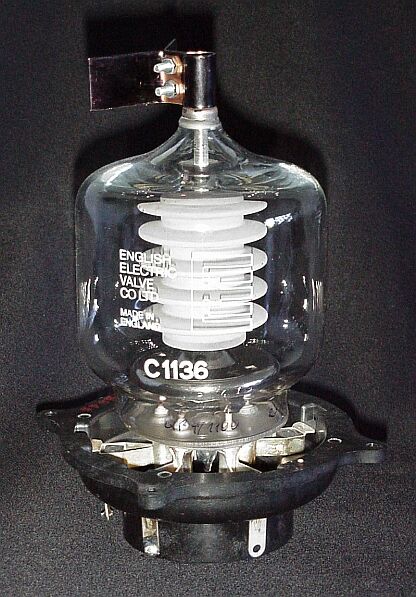 |
|
 |
|
It also is part of a series of transmitter tubes, the smallest being the 4-65A with 65 W plate dissipation, followed by the 4-125A and the 4-250A, at the high-power side the 4-500A and 4-1000A. Lower-power types have hard-metal plates.
Due to their short leads, these tubes mustn't be operated without a forced-air cooling - the air entering through a special socket (see photo) , first cooling the base pins, then passing the tube inserted into a chimney and leaving the system by passing the top anode lead, which must carry some kind of cooling fin. Tube producers offer suitable fins (at sometimes excessive prices), but selfmade fins (0.7 mm copper) do the same job as well - as you see at the photo. Even just heating without fan isn't recommended - the heater pins might overheat, eventually causing leakage of the glass bottom passage.